The History
After WW2 the UKW broadcasting has triumphed over other kinds of terrestric broadcasting due to its outstanding quality (FM vs. AM).
The ancient receivers have been tube-operated and special USW add-ons (ultra short wave, 87.50 MHz to 108.00 MHz) have been sold to upgrade them.
Over decades, the appliances have been improved from single-tube regenerative circuit receivers after WW2 to Japans HighEnd HiFi gear of the late 70's and 80's of the last century.
The Glory Analogue Times
Later, the german TV broadcast cable net became the best source for high end equipment. The signal/noise ratio was excellent and you got rid of the roof-mounted aerial system finally. The cable net always has offered a lot of analogue channels for 'USW' (ultra shortwave, 87.50 MHz to 108.00 MHz).
With the expansion of the analogue cable TV network from the early 1980s until today, its frequency table has been expanded too, also rearranged and digitalized step-by-step later on. All the time, the USW band never has been touched... until 2018.
The Digitalization
2018 you suddenly could listen to a female voice on all USW channels, telling: "The analogue cable radio service will be discontinued from [date]. Please change over to DAB+ or use a converter unit to receive digital radio now. Thank you."
For the USW equipment, It was the end of the analogue age.
Prospect
Ok, there - we own a nice, beautyful high end tuner and were advised to place an ugly "plastic bucket" (the converter) besides? No, thanks, that's terrible!
Using the terrestic USW instead of the cable has other disadvantages, caused by interferences coming from all the digital stuff around. USW has a rough ride.
What can we do? On the one hand I want to run that beautiful tuner, on the other hand it is outdated, technically spoken...
My rework
Thinking some days back and forth, weighing the possibilities, it came to the end the best solution would be to insert a BLUETOOTH receiver into the tuner.
Any mobile can access to it and play its music wireless, which seems much more easy compared to a (f. ex.) raspberry as a web radio receiver.
The BT receiver shall be operated after pressing program key "7". All other program keys shall work as intended (receiving USW signal).
The Circuit

I´ve analyzed the schematic of the Tuner (check here).
Topics are:
- Find the key-"7"-circuit. It is a SN7442 decoder with low-active outputs;
- The BT receiver needs 5 Volts to operate;
- I also need a circuit for switching the left and right channels from TUNER to BT and back;
- I want to mute the tuner output when operating BT (and vice versa) to reduce 'crosstalking' to an absolute minimum);
- All circuitry shall be driven from available Tuner-internal supply.
- It must be a way back. All rework must brought back to initial state, when needed the tuner in its original condition. This prohibits any removing of electronic parts from the PCB.
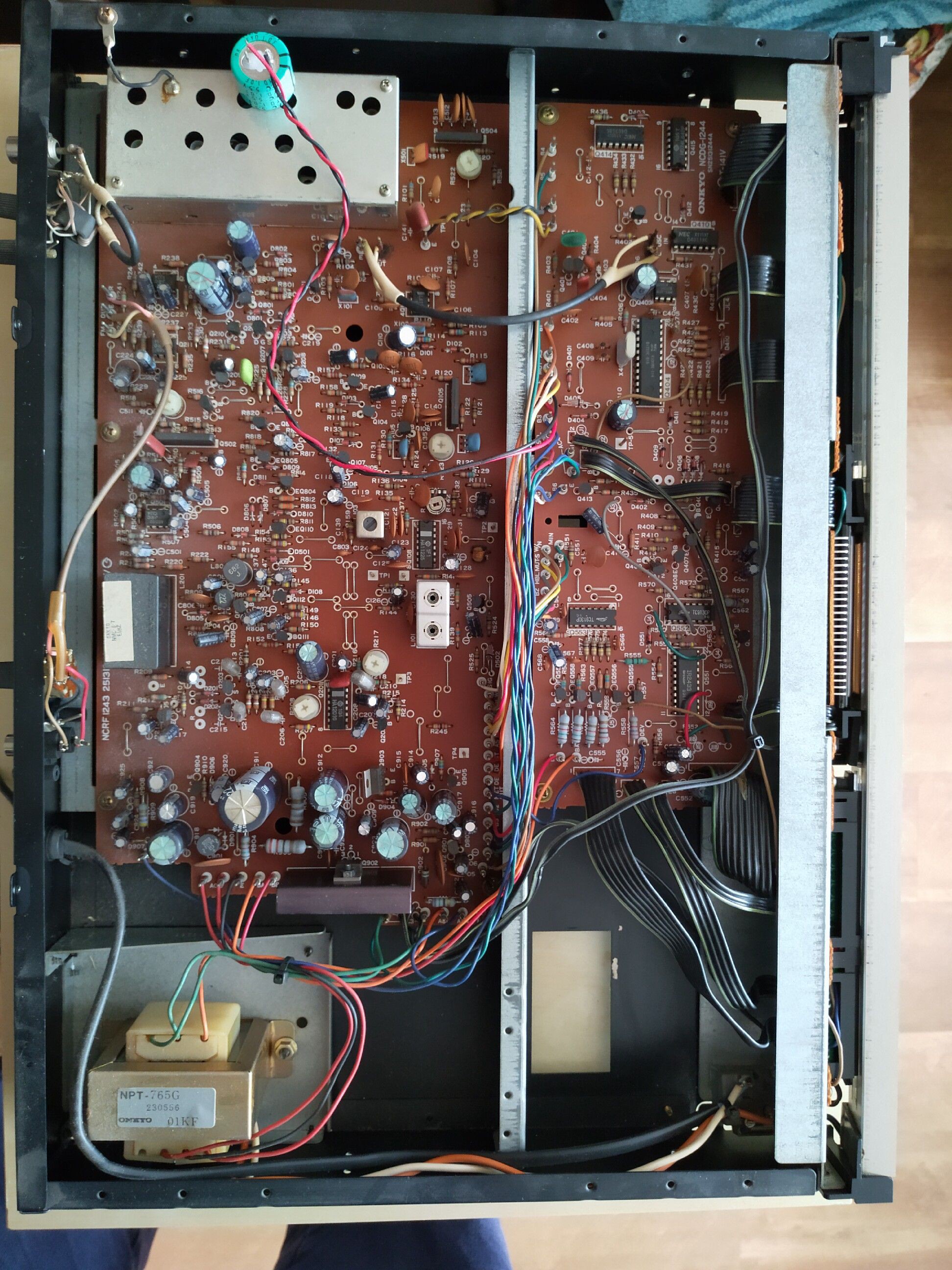
The Schematic
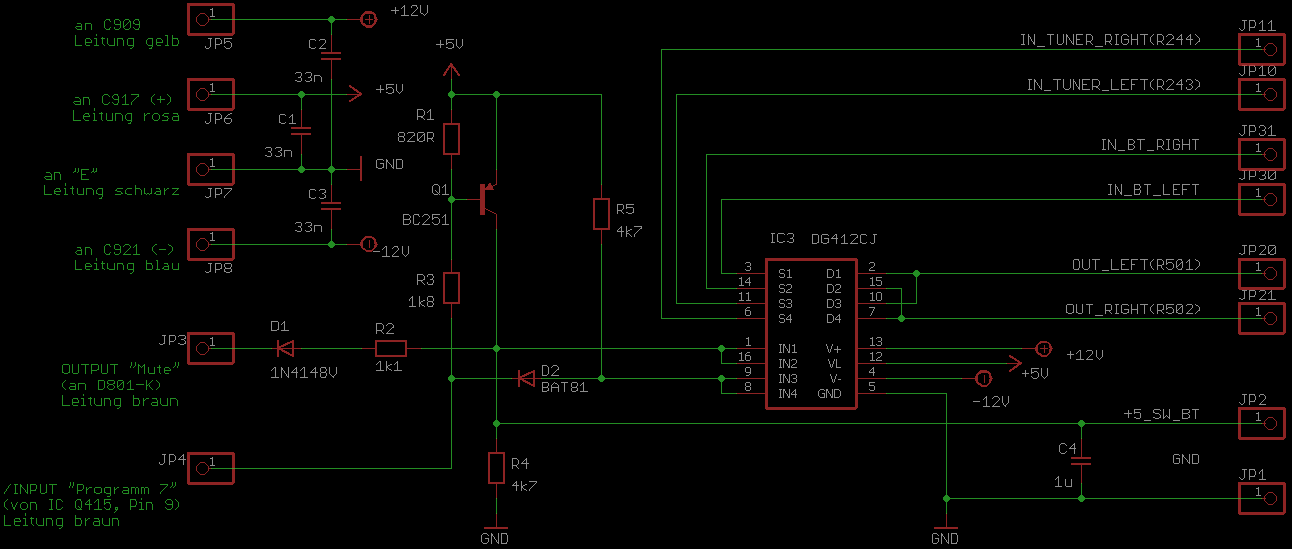
A HEF4053B contains three DPST switches but offers poor data (high internal resistance, max. 15V operating voltage), but I had a DG412 containing four SPST switches with much better data in my spare parts box.
The DG412 is switching either the tuner signal to the output, or the BT signal.
It is operated with +12 and -12, taken from the tuners supply (cable yellow and cable blue). Cable black is GROUND and cable purple is +5V.
Low-active input from Q415, Pin 9 (SN7442) switches the PNP transistor BC251. All resistor and diode network around is to match the transistor to the digital output of the SN7442 (which NOT offers +5V and 0V, refer to datasheet).
Test...
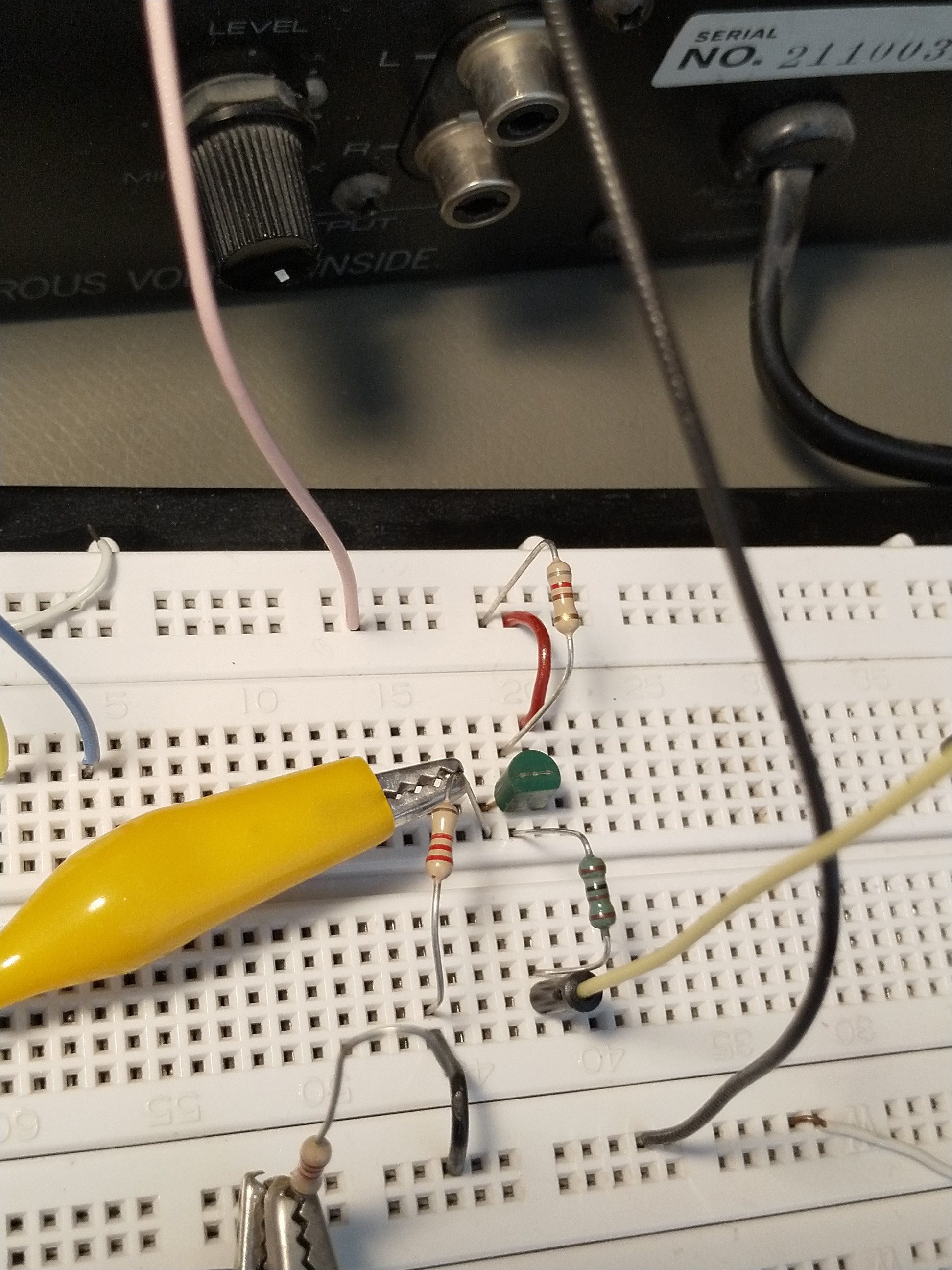
If program key "7" is pressed, the input becomes low. The Transistor goes ON and supplies the BT receiver. Also the USW receiver output gets muted by current over R2 & D1 (cable grey).
Soldering
Not nice, but it works.
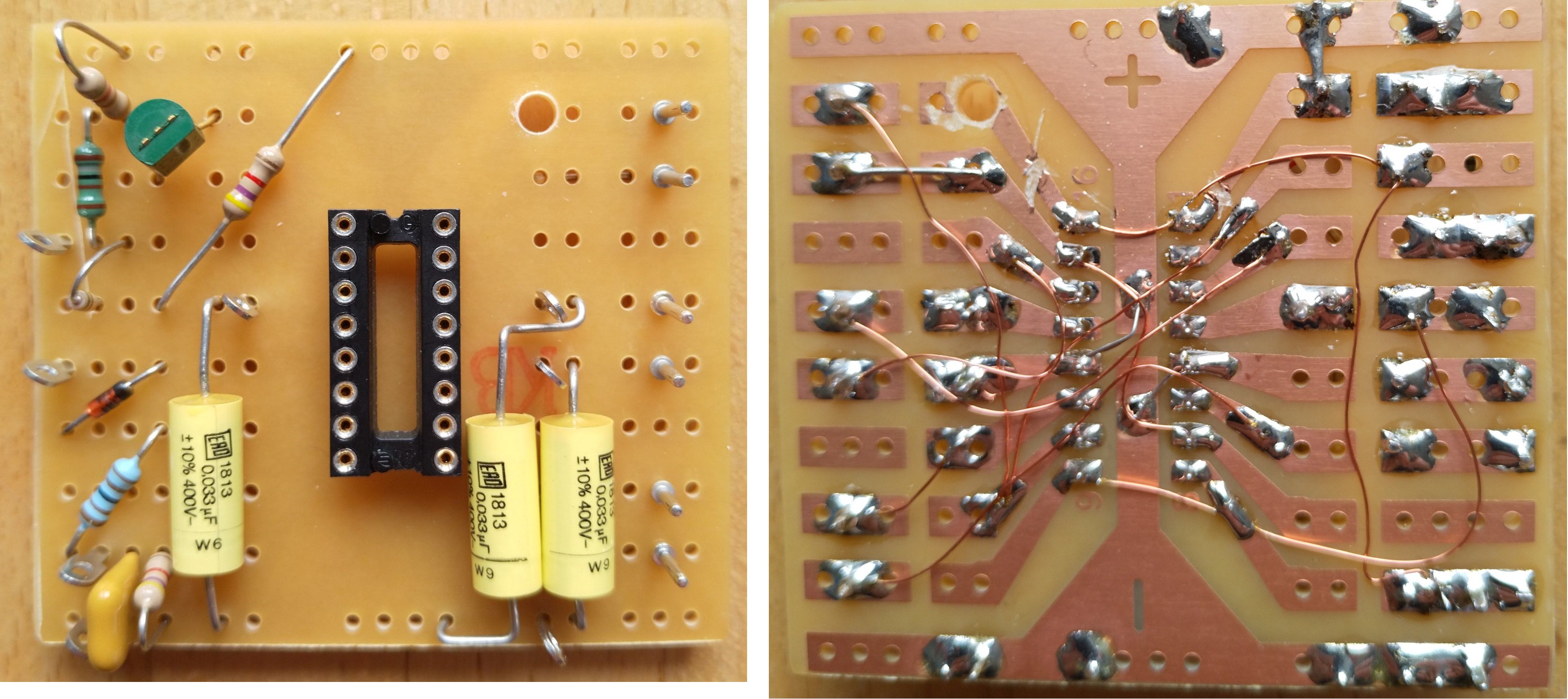
A shielding is needed for the back. I made that from self adhesive copper foil on pertinax, with a black wire for grounding.

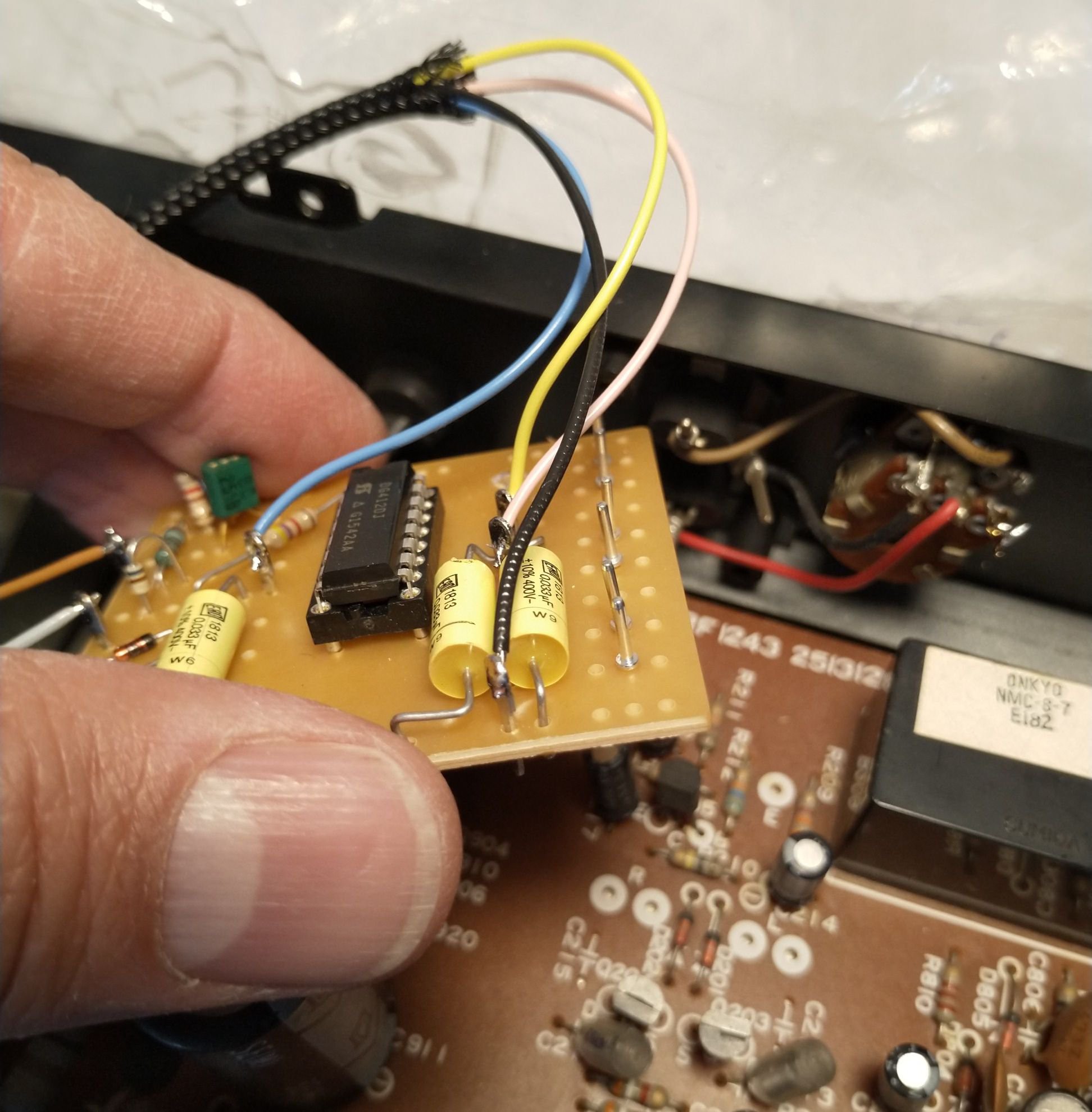
Final assembly
The audio lines (red = right, white = left)
- top: output (to amplifier)
- middle: BT (input);
- down: Tuner (input)
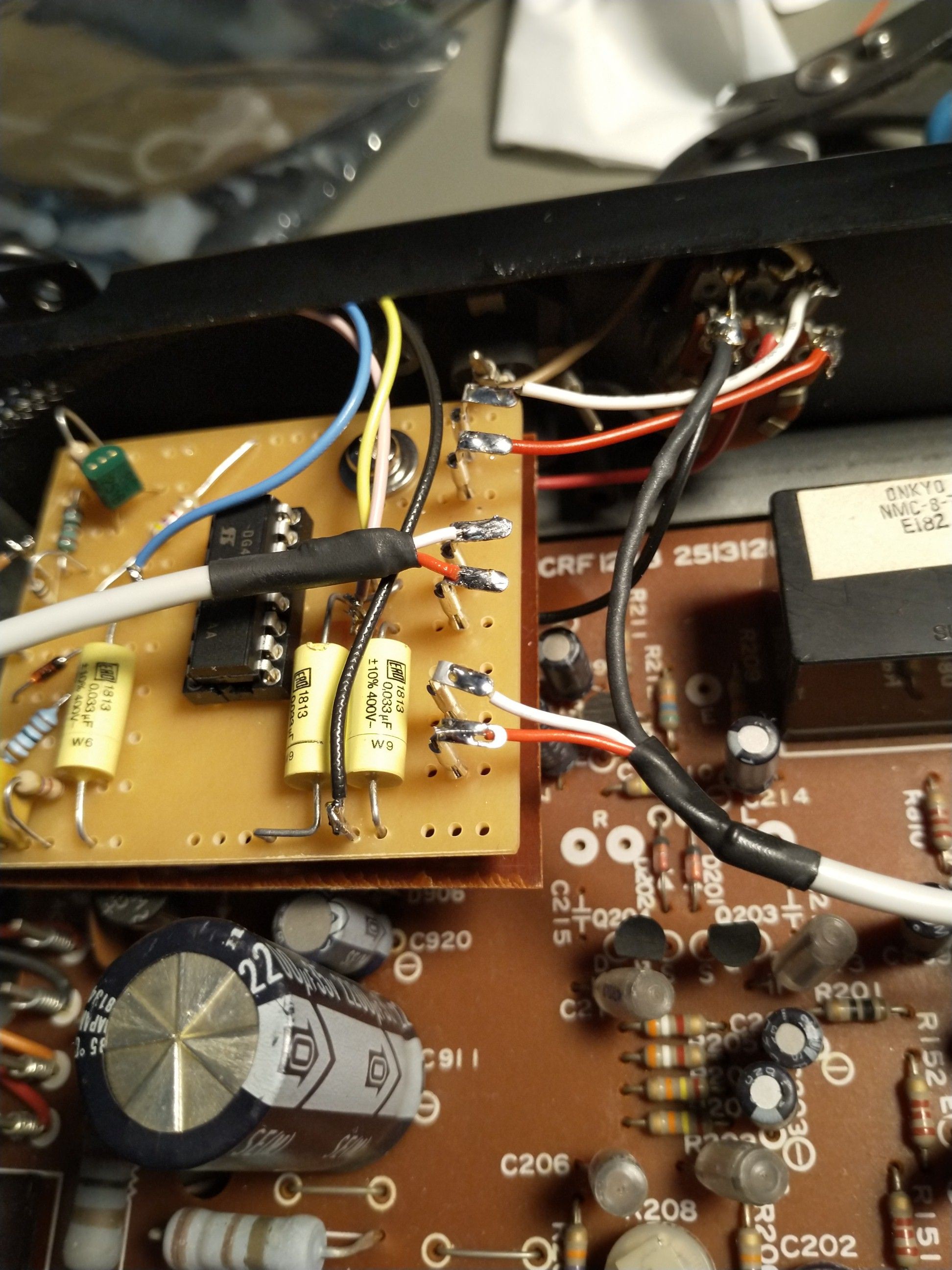
...and the back side of the tuner with the BT receiver (tape glued, there)
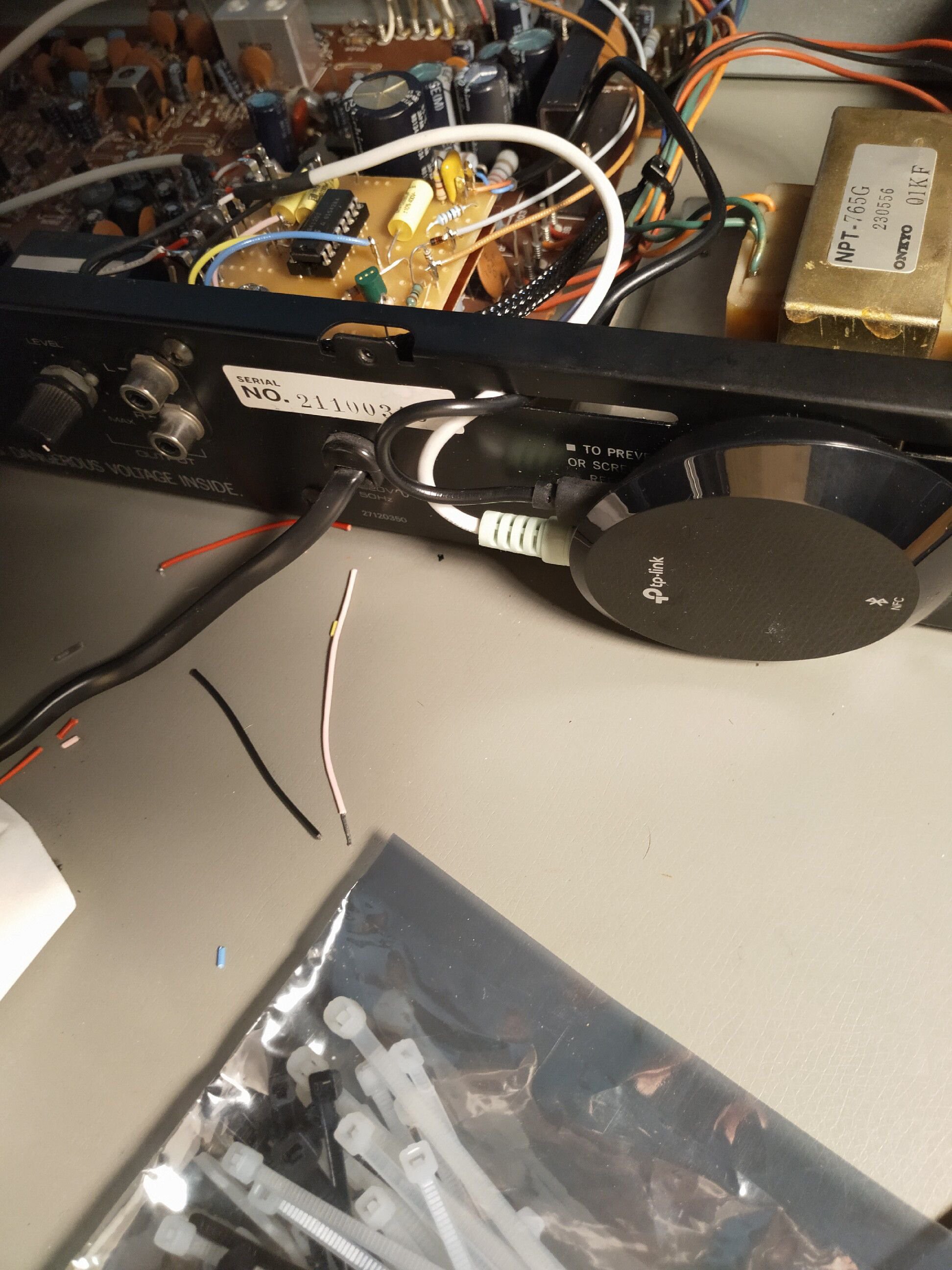
Conclusion
It was two-evening thinking and drawing and a saturday afternoon DIY soldering fun.
As desired, program key "7" is the BT receiver, the keys 1...6 are tuner program keys as known before.
The ONKYO is ready for future.
 Entunassa
Entunassa